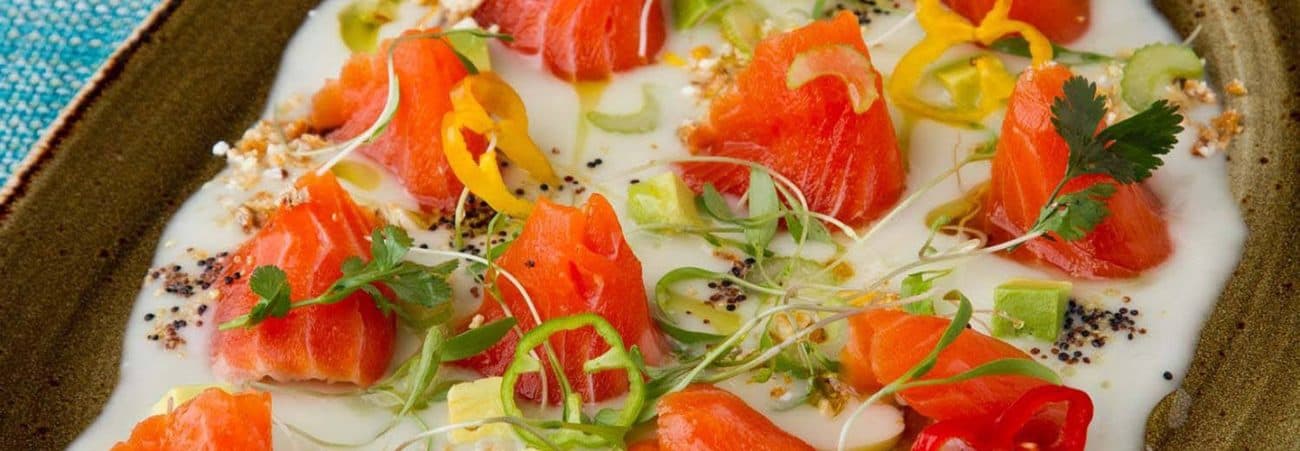
Ceviche is one of Peru’s most famous and delicious meals. Learn all you need to know about Ceviche right here: Where it’s from, how it’s made and what it is!
Ceviche has been declared a part of Peru’s national heritage but nowadays you can find many versions of it across the world.
Ceviche, which is often spelled ceviche or cebiche, depending on which part of South America it comes from, is basically raw fish and seafood marinated in citrus juice, mainly lime and lemon juice. The acid in the citrus juice coagulates the proteins in the fish, effectively cooking it, so it’s not heated, and it’s served cold or at room temperature.
Many different fish and shellfish can be used in preparing it. Snapper, sea bass, halibut, mah-mahi and tilapia are popular fish for making ceviche. Other seafood components can include shrimp, scallops, squid and octopus.
It can be eaten as a first course or main dish, depending on what is served with it. It seems as though there are as many varieties of ceviche as people who eat it.
Ceviche might have originated among the Moche, a coastal civilisation that began to flourish in the area of current-day northern Peru nearly 2000 years ago. The Moche apparently used the fermented juice from the local banana passionfruit. Recent investigations further show, during the Inca Empire, fish were marinated with the use of chicha, an Andean fermented beverage.
Different chronicles also report, along the Peruvian coast prior to the arrival of Europeans, fish was consumed with salt and “ají” Furthermore, this theory proposes the natives simply switched to the citrus fruits brought by the Spanish colonists, but the main concepts of the plate remain essentially the same.
*Ají amarillo is a fruity pepper really popular in Peruvian cooking. They’re difficult to track down in other countries, but you can order them dried online, or find them frozen in South American shops
Peru is open!
Peru Hop is the only company offering flexible date change until 2024 at NO extra cost.
Find My Perfect Trip